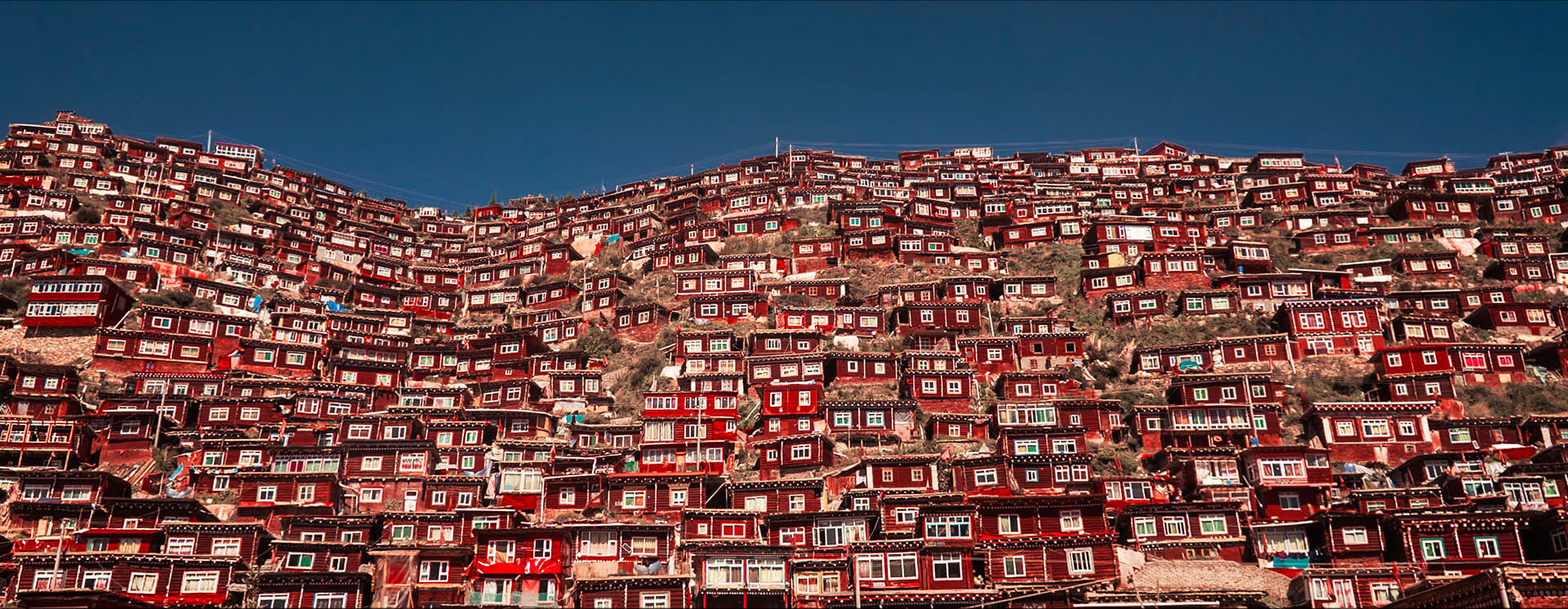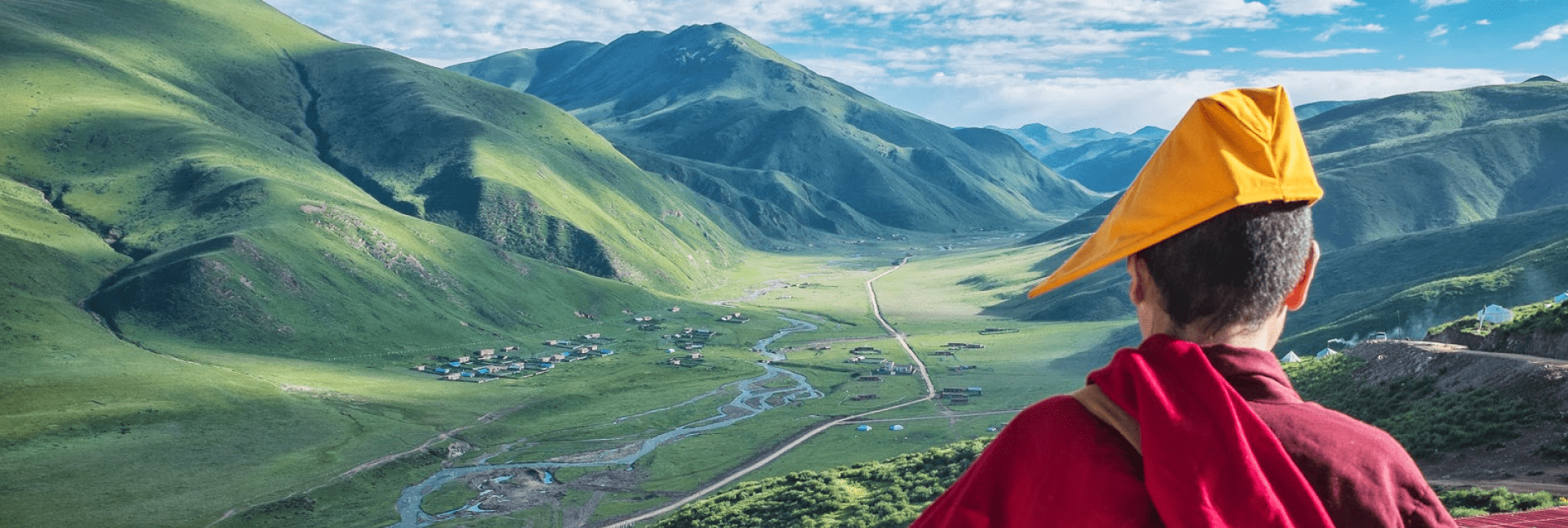
Tibetan nomads
Nomads are being forced out of their ancestral lands, which they have farmed for centuries, and relocated to urban settlements. Their entire way of life is uprooted, and they receive little support from the Chinese government.


The Tibetan flag is one of the most dangerous symbols in Tibet.
China has made possessing the Tibetan flag illegal. It is censored from media inside the People’s Republic of China. Meanwhile, Tibetans face arrest for owning, waving or flying their national flag, or even having an image of it on their mobile phone.
However, under the occupation, the flag has become a symbol of protest and unity for Tibetans, whether protesting inside Tibet or around the world.
The flag, adopted by the 13th Dalai Lama in 1916 and used in Tibet until 1959, incorporates symbols representing Tibet’s Himalayan setting, the tribes that formed Tibet and Buddhist teachings. An in-depth description of each element can be found here.
Lhamo Kyab is one of many Tibetans who has suffered arrest and torture for possessing the Tibetan flag.
A nomad from Amdo in eastern Tibet, Lhamo Kyab fled to India in 2003, but he dreamed of returning to Tibet to fly the national flag over a holy mountain near his home. He set out to do just that but he was arrested before he could raise the flag.
He was detained for 11 months and hospitalised several times before any charges were brought against him. In the video below, actor Dominic West reads Lhamo Kyab’s torture testimony, delivered after he escaped to India in 2009.
Eventually, he was sentenced to three years in prison for possession of the Tibetan national flag, attempting to fly the Tibetan flag, returning illegally from India and planning to undertake the act of ‘splitting the country’, a state security crime under Chinese rule.
The Tibetan flag may be banned inside Tibet, but they have become synonymous with Tibetans’ national identity and their sense of resistance.
Any Tibetan protest or commemoration will take place against a sea of flags, especially on 10 March, the anniversary of the 1959 Tibetan Uprising. A growing number of local councils and even some government officials have taken to showing support for Tibet by raising the Tibetan flag every 13 February, Tibet’s independence day, and 10 March.
You can support Tibet by encouraging your local council to hold a flag-raising event, to show Tibetans that they have an ally, and to show the Chinese government that we will never stop demanding a free Tibet.
We at Free Tibet refuse to stay silent whilst these human rights abuses are still taking place. We fight tirelessly to raise awareness of these crimes and educate, inform and push for these abuses to be discussed not only in households but also in Parliament.
However, we cannot do this without your support. Add your voice to ours:

Nomads are being forced out of their ancestral lands, which they have farmed for centuries, and relocated to urban settlements. Their entire way of life is uprooted, and they receive little support from the Chinese government.

Spread among the hills in Serta County in Kardze, eastern Tibet, Larung Gar Buddhist Institute is the largest and one of the most significant sites in Tibetan Buddhism.

Spread among the hills in Serta County in Kardze, eastern Tibet, Larung Gar Buddhist Institute is the largest and one of the most significant sites in Tibetan Buddhism.
